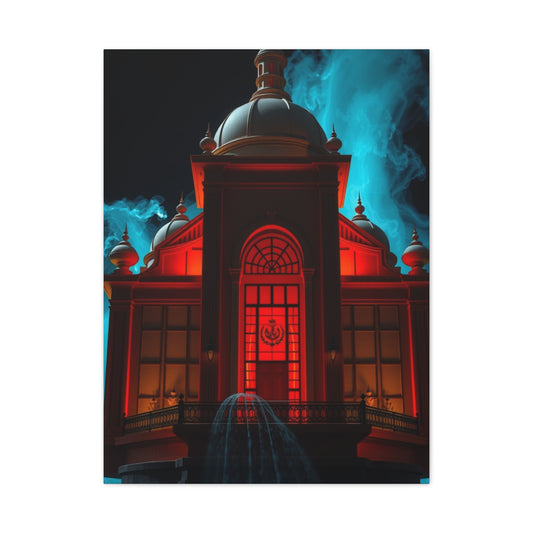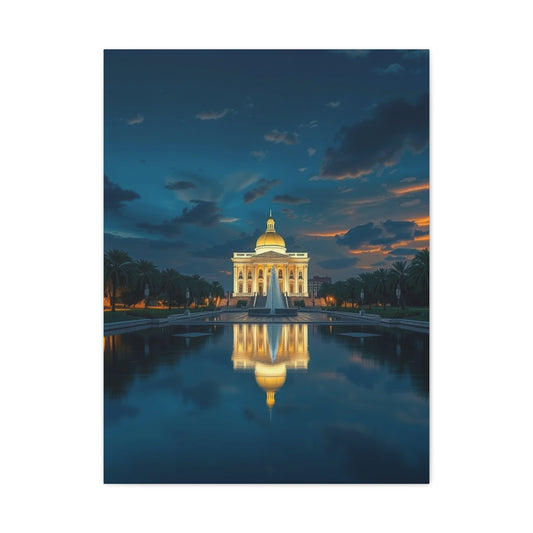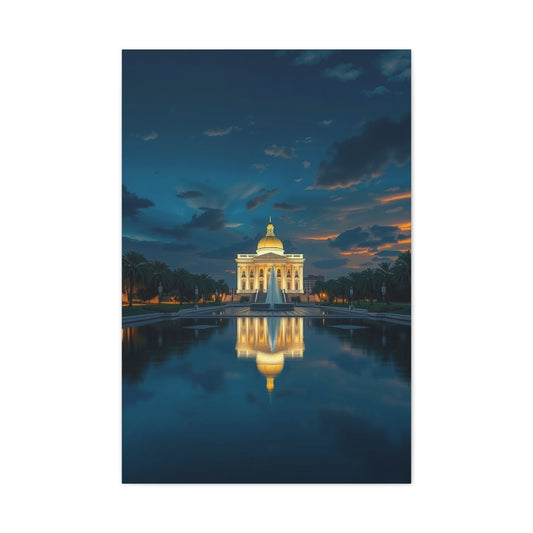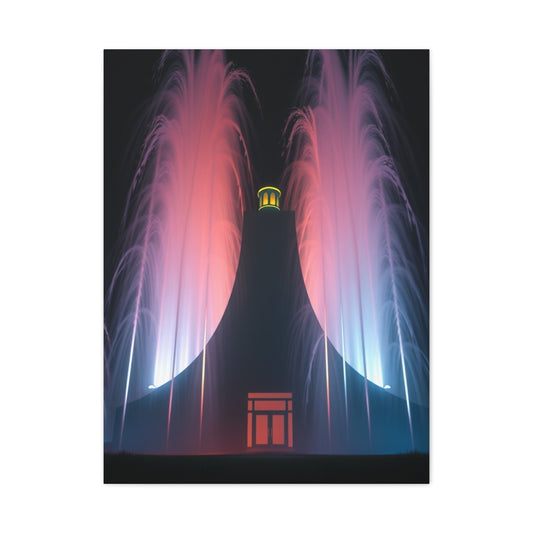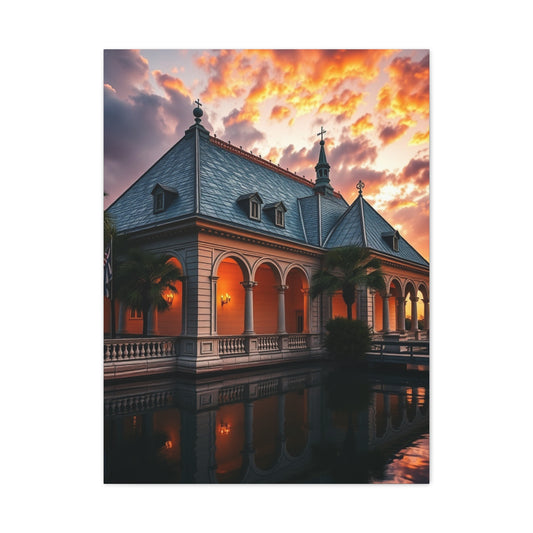The Secret Life of Drawing Tools: A Ritual of Intuition and Exploration
Within the private sanctuaries of artists' studios, a quiet but deeply familiar tableau is always unfolding. Cups and jars overflow with pens of every imaginable make, sketchbooks lay stacked and softened by years of laborious mark-making, and amidst the seeming chaos, a near magnetic pull always leads the hand back to a few beloved tools. The process of arriving at these favorites is never linear; it is an odyssey stitched together by curiosity, experimentation, intuition, and longing. Every artist is driven by particular desires, the need for ink so black it seems to drink in the light, the yearning for a line so spontaneous it breathes with the artist’s pulse, the hunt for a nib that glides, hesitates, and sings across the surface with exquisite unpredictability.
Yet these cravings are not sated by the pen alone. The dance of drawing is an alchemy, a delicate symphony conducted not by the hand alone, but in the tension between tool and surface. The very character of the paper, its texture, absorbency, whiteness, and elasticity, can either amplify or obscure the intended voice of the pen. It is in this subtle, often invisible interplay that true artistry begins. To delve deeply into this relationship, illustrator H Locke, known for his enchanting architectural drawings and whimsical narrative sketches, embarked on a meticulous examination. His journey was not simply one of comparing tools; it was a search for the soul of the materials, the whispered conversations between ink and fiber.
Thirteen pens and seven different papers were placed under scrutiny, with each partnership examined for its behavior under pressure: the darkness of the ink’s deposit, its tendency to feather at the edges, its resilience against smudging, its proclivity for bleeding or ghosting through the page, and the smoothness or hesitation in its flow. The roster of pens was as diverse as the artist's influence, technical instruments such as the revered Rotring Rapidograph and Aristo Drawing Pen, reliable disposable companions like the Sakura Micron and Uni Pin Fineliners, expressive brush pens from Pentel, and the untamed spirit of dip pens wielding viscous acrylic inks. As for the papers, they spanned from the soft yet disciplined surfaces of hot-pressed watercolor sheets to the unyielding gleam of Strathmore Bristol Smooth, each promising a different response to the artist’s hand.
It quickly became clear that no single combination could dominate universally across every parameter. Each pairing of pen and paper birthed its distinct narrative: sometimes harmonious, sometimes jarringly discordant, sometimes veering between the two within the same moment. The search was not for a singular ideal, but for a deeper understanding g a cartographer’s map, charting the terrains that each artist must traverse in their way.
Pen and Paper in Dialogue: Discoveries from a Journey of Trials
Among the discoveries that rose to the fore, the Stillman & Birn Zeta sketchbook paper revealed itself as a revelation. Straddling the tender balance between the resilience of Bristol board and the yielding acceptance of a fine cartridge paper, Zeta offered a luxurious dance floor upon which almost every pen could perform with grace. Smooth but not sterile, substantial but not overly absorbent, its subtle resistance allowed even the most tentative lines to sing with clarity, while bold strokes retained their integrity without bleeding into unintended halos. In many ways, it emerged not as a passive surface but as a true collaborator, capable of elevating the performance of even the most humble pen.
Conversely, the RENDR paper, with its peculiar grey-flecked tone and its remarkable resistance to show-through, delivered more polarizing experiences. For markers and heavy-bodied pens, it provided an unprecedented freedom to layer and saturate without concern for bleed. Yet its peculiar resistance seemed to confound the dip pen, rejecting the tender touch of delicate nibs and creating erratic flows where smooth streams were desired. It was a paper that demanded negotiation, that met the artist’s gesture not with unquestioning submission, but with its distinctive personality.
On the side of pens, the Sakura Micron fineliners shone for their effortless, buttery ink flow and a luminous blackness that remained rich even upon drying. In a realm where disposable often means compromise, the Micron pens offered a whisper of permanence, a sense of devotion to the craft rarely encountered in single-use instruments. Yet for those willing to navigate the mechanical discipline required, the Aristocrat Drawing Pen provided an experience altogether more profound. Its replaceable ink well, filled with a black so dark it seemed to anchor the drawing to the page, conferred a gravitas that disposables struggled to match. Every stroke made with the Aristo bore the weight of intention, a depth that spoke of the artist’s commitment to their mark.
No universal hierarchy could be declared, however. Just as an artist's line may shift from whispered hesitation to thunderous declaration within the same composition, so too did the best combinations change depending on the creative need. Those seeking exuberant saturation found joy in the marriages of Promarker and RENDR, where vibrant hues bloomed like unfurling petals. Those chasing fastidious precision found solace in the duet of Rotring Rapidograph and Bristol Smooth, where the line’s fidelity was absolute. And for those drawn to the dance of imperfection, to the shiver of a hand-drawn thought, the raw interplay between dip pen and cotton-rich sketchbook paper delivered endless reward.
Ultimately, these trials and discoveries stitched together a larger truth that drawing is not a sterile application of ink to a blank slate, but a living, breathing dialogue. It is the hiss of a pen skating across paper, the reluctant tug where ink finds a deeper purchase, the way a rougher grain can transform a sterile line into a living entity, pulsing with the breath of its creator.
Drawing as a Breathing Collaboration: Beyond Tools, Into Resonance
What emerged most powerfully from this voyage was the affirmation that drawing is not, and has never been, merely a technical transaction. It is a breathing, kinetic collaboration between hand, instrument, and surface. In the fine tension between nib and grain, in the moist hiss of wet ink against dry pulp, ideas find bodies. Thoughts half-formed, tentative, yearning are given a pulse, a heartbeat, a voice.
Each combination of pen and paper carries within it a unique musicality. Sometimes it is the soaring aria of a perfect match—Micron gliding on Zeta, a song of unwavering clarity. Sometimes it is the strained dissonance of a tool fighting its surface, as when a dip pen scratches unwillingly across the synthetic resilience of RENDR. But even in struggle, something vital is born. It is often in those moments of unexpected friction that new gestures emerge, unbidden and unrepeatable, forever altering the artist's vocabulary.
The investigation, though meticulously empirical, rekindled a deeper invitation: to abandon the search for perfection. There is no singular "best" pen, no universally superior paper. Instead, there is only the endless search for resonance, for the pairings that best echo the artist's voice in that singular moment of creation. The choice is a living one, shifting and evolving just as the artist does.
In the coming explorations, the peculiarities of each pen will be unfurled, their temperaments and talents illuminated with care. We will traverse the tactile worlds of the papers, from the cool discipline of Bristol board to the yielding warmth of textured cotton sheets, savoring their possibilities and acknowledging their stubbornness. Through this shared journey, readers are invited to view their materials not as static tools, but as living collaborators in the act of drawing—a symphonic interplay where, through every stroke and every touch, thought is transmuted into form with breathtaking immediacy.
The Silent Dialogue Between Pen and Paper: A Realm of Delicate Tensions
Every mark an artist lays upon the page carries an unspoken debate, an intimate negotiation between hand, tool, and material. It is within this almost sacred encounter that the unvoiced tension between expectation and revelation finds its most exquisite expression. Nowhere is this delicate struggle more poignant than in the conversation between drawing pens and the receptive landscapes of paper. Each stroke, whether triumphant or fraught with hesitation, unfolds the subtle choreography that exists between ink and fiber.
Among the paragons of technical refinement, the Rotring Rapidograph stands as a marvel of engineering and obsession. This precision instrument, forged with the meticulous demands of architects and draftsmen in mind, offers lines of breathtaking fineness and clarity. Yet, its talents demand an equally discerning stage. On textured, cotton-rich sketchbooks, the Rotring’s whisper-thin nib falters, its fluidity broken by the paper’s tooth, exposing a frailty that seems almost human. However, when given the polished, unblemished expanse of a Strathmore Bristol Smooth sheet, the Rapidograph transforms. Here, its silken murmurs can extend unfettered across the page, each line a filament of intention, though with the caveat of glacial drying times that test even the most patient souls.
In contrast, the Aristo Drawing Technical Pen, with its broader, more assertive voice, brought a deeper sonority to the page. It imbued surfaces with a resonant blackness, a saturated richness that spoke of confident finality. Particularly when applied to the almost celestial smoothness of Stillman & Birn’s top-tier papers, the Aristo flourished, its pigment resting proudly atop the surface without the faintest hint of feathering or bleed. Where the Rotring whispered, the Aristo proclaimed each a master of a different kind of eloquence.
Solvent-based Promarkers introduced a wholly different temperament to the ensemble. These effusive instruments unleashed a torrent of ink with the barest encouragement, demanding substrates capable of absorbing their tempestuous nature. RENDR papers, with their chemically fortified structures, proved ideal partners. Here, the Promarkers pirouetted with abandon, flaunting their bold chromatic displays without the shame of bleed-through. In contrast, on more traditional sketchbooks, their unbridled energy often betrayed them, spawning feathered edges and ghosted apparitions on the page's verso a cautionary reminder that not all papers are willing partners to every pen’s passion.
Fineliners brought a quieter, steadier pulse to the symphony. The Uni Pin pens, venerable in their reliability, glided faithfully across varied terrains, sacrificing only a modicum of blackness in exchange for impeccable consistency. They became the trusted companion for illustrators seeking predictability amid the capricious tides of inspiration, their ink forming steady paths no matter the surface beneath. Meanwhile, the Sakura Pigma Micron series revealed a contrasting vitality. Their lines, infused with a vibrant depth, danced across smooth fields with a seductive grace. On surfaces like the Touch Twin marker pad and Stillman & Birn’s ethereal finishes, the Microns produced gestures that felt alive, each mark breathing with an almost animate resonance, capturing the trembling spontaneity of thought as it first blooms into form.
Traits of the Instruments: A Tapestry of Contrasts and Compatibilities
Turning to other fineliner rivals, the Faber-Castell Ecco and the Zig Mangaka pens demonstrated stalwart competence across diverse media. They lacked the dramatic flair of their more celebrated brethren, yet their evenhanded performance offered a kind of quiet dependability. The Ecco occasionally thickened its lines at inception, a quirk that seasoned hands could learn to wield, transforming potential flaw into expressive flourish.
The Pilot Drawing Pen and Staedtler Pigment Liner, meanwhile, revealed a shared temperament of muted blackness, offering subtler tonal explorations. In the realm of nib resilience, however, the Staedtler quietly eclipsed the Pilot, its construction enduring prolonged sessions without surrendering to wear or eccentricity. Artists valuing structure and longevity in their tools would find a firm ally in Staedtler’s measured performance.
Venturing into more expressive territory, the brush pens recast the nature of line entirely. The Pentel Watercolour Brush Pen introduced a wild, untamable spirit into the proceedings. Its ink bloomed and smudged with reckless abandon at the whisper of water, refusing the strictures of precision and inviting the artist into a more painterly realm of spontaneity. It demanded not control, but partnership and acceptance of chaos as part of the creative dance.
The Pentel Pigment Brush Pen offered a more disciplined alternative, retaining much of the brush’s expressive potential while providing faster drying times and more stable layering, particularly on polished substrates such as Bristol boards and Stillman & Birn papers. Here, the brush’s vigor was tempered into dynamic but manageable gestures, allowing for a hybridization of drawing and painting techniques that many artists found invigorating.
Perhaps the most ancient and demanding instrument tested was the dip pen, fueled by the deep, luscious black of Liquitex acrylic ink. This venerable tool carved rivers of expressive ink across most papers, its fluidity unchallenged, its marks resistant to smudging once dried. Yet its journey was not without peril. On the otherwise miraculous RENDR paper, the dip pen met its nemesis, its lines bleeding outward into untamed blooms, a vivid reminder that chemistry as much as craft determines the fate of every mark.
Thus, with each tool, a complex interplay of strengths and vulnerabilities was laid bare, offering not a hierarchy of better or worse, but a shifting mosaic of possibilities. Each pen, each paper, and each hand will always compose their own unique music a song shaped by personal touch, artistic ambition, and the ungovernable will of materials themselves.
Paper as Muse and Adversary: Toward the Soul of the Drawing
As our journey continues, the paper reveals itself not merely as a passive receiver but as an active provocateur. Each sheet, each texture, calls forth different facets of the artist's intention, sometimes elevating it to heights unforeseen, sometimes confounding it in quiet rebellion. The surface of the page is no inert void; it is the silent second voice in every line drawn.
Smooth papers like Strathmore Bristol Smooth and Stillman & Birn’s Zeta coax from technical pens a purity of line that feels almost otherworldly. They reward slow, deliberate mark-making and expose every tremor of hesitation. For pens like the Rotring Rapidograph or Sakura Pigma Micron, these surfaces offer the perfect canvas to display their fineness and expressive nuance, enabling gestures that feel suspended in crystalline clarity.
Toothy papers, rich with cotton content and natural grain, such as premium sketchbooks intended for mixed media, awaken a different kind of dialogue. Here, resistance becomes a collaborator. Pens catch, stutter, and sometimes fracture, yet from these disruptions spring new possibilities—textured lines, broken edges, suggestions of movement and energy that polished surfaces might silence.
Marker-specific papers like the Touch Twin and Crescent RENDR series redefine boundaries altogether. Designed to arrest the bleed-through of solvent-heavy inks, they allow for lush, saturated coloration without the attendant sorrows of ruined pages. Promarkers and solvent-driven tools thrive here, unfurling bold displays of chromatic vigor, while finer instruments sometimes find the slick surface less amenable, their precision sacrificed on the altar of vibrancy.
Thus, the paper becomes more than a backdrop. It shapes the artist's rhythm, dictates the cadence of creation, and molds the emotional tone of the work. Smoothness invites control but demands patience; texture provokes energy but demands compromise; chemical treatments offer boldness but sometimes at the cost of subtlety. To master the interplay of pen and paper is not to dominate one with the other but to listen to enter into a duet where both partners shape the song.
In the next part of our exploration, we shall dive deeper into the tactile and chromatic identities of each paper itself, examining how whiteness, absorbency, and fiber composition alter the destiny of marks laid upon them. Through this investigation, we will uncover how the humble sheet transforms from silent witness to dynamic co-creator, influencing not just the look but the very soul of every finished drawing.
The Silent Architecture of Drawing: How Paper Shapes Ink’s Voice
When the artist reaches for a pen, the choice is deliberate, rooted in texture, tone, and nuance. But just as critical to the final expression is the surface that receives each mark. Paper is not a passive bystander in this exchange; it is an active participant, capable of amplifying, softening, or even resisting the story that ink seeks to tell. In this intricate dance, each sheet offers its own set of rules, mysteries, and possibilities.
The Jackson’s Chunky Sketchbook, for example, offers a cotton-rich surface that feels pleasantly robust without losing the nimbleness needed for spontaneous work. With a mid-smooth texture that feels almost forgiving under the hand, it balances absorbency with resistance, allowing pigment fineliners and dip pens to perform without distortion. However, it shows its limits when faced with the unrelenting surge of solvent-based markers, allowing some bleed-through and ghosting—a gentle reminder that no single medium rules every domain. Light watercolor washes are met with stoic acceptance, yet heavier layers of water risk coaxing minor undulations from its fibers.
Transitioning to the Stillman & Birn Zeta series is akin to stepping into a different acoustic chamber. Its surface, burnished to a near-mirror finish but retaining a breath of tooth, offers a superbly versatile experience. Here, ink can either rest lightly atop the surface or sink deeply, depending on the tool’s intensity. The Zeta emerges as a rare chameleon, adapting to rapid shifts between pen types and media. It resists bleed-through even under aggressive layering, making it a near-ideal choice for mixed-media experiments where brush pens, technical fineliners, and even modest washes are part of the narrative.
Crescent RENDR introduces itself as an eccentric yet charismatic companion. Its faintly grey hue and curious speckling give it an atmospheric, almost cinematic background. Engineered with anti-bleed technology, it triumphs against solvent marker saturation, guarding its verso side with vigilance. Yet, with dip pens or finer technical tools, it reveals its rebellious spirit. Lines, instead of remaining obedient and crisp, may splinter and feather with unpredictable abandon. RENDR asks for an artist willing to yield control, embracing the unpredictable tides of ink rather than fighting them. For the expressive illustrator who values texture and the unexpected, it can be a hidden treasure.
Daler Rowney’s Ebony Sketchbook presents itself with understated grace. It leans slightly greyer than Jackson’s offering, with a smoother surface that politely accommodates all manner of pens. It neither enhances nor obstructs; it simply exists as a steady companion for practice sessions, ideation, and studies. In an era where every product shouts its virtues, the Ebony Sketchbook’s unassuming reliability speaks volumes to those who seek consistency over spectacle.
The experience of working on the Strathmore Bristol Smooth is nothing short of reverential. Its ultra-smooth, almost glass-like surface invites the finest nibs and technical pens to dance with unparalleled clarity. Each line sharpens into crystalline precision, revealing nuances of gesture that coarser papers might swallow. However, such refinement demands patience; inks, deprived of absorbent fibers to cling to, linger wetly, testing the artist’s impulse for haste. Solvent markers perform respectably, but given the thickness of the card, true double-sided work remains elusive.
Meanwhile, the Shinh Han Touch Twin Marker Pad seems to whisper rather than speak. It is a wisp of a paper, almost ephemeral in hand. Designed with marker illustrators in mind, it minimizes feathering and encourages confident, gestural strokes. Its transparency hints at utility beyond finished pieces, such as for use with lightboxes or layering studies. However, its fragility forbids any reckless dalliance with wet media; watercolor or heavy inking will overwhelm its delicate structure almost instantly.
In contrast, the Langton Prestige Hot Press Watercolour Paper stands tall as the seasoned elder among these papers. Its hot-pressed surface smooths the chaotic exuberance of watercolor without erasing the soul of the brushstrokes. Cream-toned and deliciously thick, it offers a secure foundation for traditional pigment inks and dip pens, holding the mark firmly without undue bleeding or feathering. Solvent-based inks may occasionally scar their fibers, but in exchange, they gift a luminous partnership with water and pigment unmatched by thinner stocks.
Across these different terrains, even the subtle quality of whiteness becomes a critical factor. RENDR’s atmospheric grey tone imbues sketches with a preternatural depth, while the Jackson’s and Daler Rowney lean towards a slightly warmer spectrum that lends drawings a nostalgic glow. Strathmore Bristol Smooth and Stillman & Birn Zeta maintain the most neutral white, preserving pigment integrity and ensuring that hues are represented as faithfully as possible. Langton Prestige, with its creamy warmth, evokes the parchment-like feel of historical manuscripts, subtly enriching whatever mark dares to touch its surface.
Paper as Ally and Adversary: The Secret Temperaments Beneath the Surface
Each paper tested here reveals a unique emotional spectrum when met with ink, suggesting that the real challenge for artists is not finding a universally "perfect" paper, but rather forging alliances suited to the particular emotional tenor of a given piece. Paper and pen, when thoughtfully matched, create symphonies where texture becomes tone, absorbency transforms into mood, and linework sings with intention.
For the bold expressionist who seeks to wield brush pens and solvent markers with fluidity and force, RENDR or Stillman & Birn provide the most forgiving and versatile grounds. Their resistance to bleed-through encourages expansive gestures without the constant anxiety of damage to the reverse side of the sheet. For the meticulous draughtsman or architectural illustrator, craving pinpoint precision and control, the Strathmore Bristol Smooth emerges as the inevitable destination, offering a peerless arena where every minute detail can shine unimpeded.
For the painter-illustrator who navigates between ink and watercolor washes, who seeks not just resilience but an active dialogue with the medium, Langton Prestige Hot Press Watercolour Paper becomes an exquisite ally. It rewards careful layering and considered strokes, preserving transparency and luminosity in ways few surfaces can emulate.
The Shinh Han Marker Pad and Daler Rowney Ebony, in their quieter, more specialized ways, offer sanctuaries for study, exploration, and ideation. While they may not scream versatility, their reliability makes them invaluable for rehearsals, experiments, and thoughtful compositions.
The nuances between these papers, the whisper of a smoother surface, the subtle roughness that catches a nib, the difference between a neutral white and a creamy tone, are the very heartbeats of a drawing experience. They mold the voice of the ink, influencing its vibrancy, spread, and character, sometimes subtly, sometimes with dramatic flair.
The Artist’s True Compass: Embracing Paper as Creative Collaborator
Ultimately, the quest for the perfect paper is not about finding a single champion that can shoulder every artistic burden. Rather, it is about cultivating a sensitive awareness of the hidden dialogues between medium and surface, ink and fiber, intention and accident. Paper should be seen not as an inert background, but as an intelligent, unpredictable collaborator one whose temperament must be understood, respected, and occasionally challenged.
The artist who learns to listen to paper discovers new dimensions within their work. They learn when to coax and when to surrender, when to push against resistance and when to flow with it. Through such attentive partnership, a deeper craftsmanship emerges, rooted not just in the hand but in the very materials that extend it.
Each drawing becomes a conversation, each mark an act of mutual shaping. The softness of a touch, the insistence of a heavy line, and the wash of pigment flowing into unexpected rivulets all are shaped by the unseen hand of the paper. This intimate knowledge transforms not only the technical aspects of art-making but also its emotional depth and authenticity.
There are no perfect papers. There are only perfect occasions: moments when the needs of an idea find their ideal companion in a sheet’s unique temperament. Some days demand the crystalline rigor of Bristol Smooth; others call for the wild unpredictability of RENDR. Some sketches find their soul on the creamy embrace of Langton Prestige; others unfold most naturally across the cottony warmth of a Jackson’s Sketchbook.
The Pen and Paper Symphony: Where Tools and Intentions Collide
In the grand journey of artistry, the quest for the perfect union between pen and paper is less a conquest and more an intricate dance. Rather than a clear, final verdict on the best combinations, the culmination of this exploration extends an open-handed invitation to embrace the unique resonances that each artist finds along their path. It becomes immediately evident through testing and traversing diverse tools that mastery is not achieved by obeying rigid formulas but by forging personal affinities born from experience, patience, and curiosity.
Within the realm of disposable fineliners, certain voices rise above the hum. The Sakura Pigma Micron, for instance, radiates a vitality that seems to infuse the page with life itself. Its dense black ink and delicate fluidity nurture a space where control and serendipity coexist, perfect for those who wish their drawings to pulse with an undertone of spontaneity. On the other hand, the Uni Pin Fineliner offers a rock-steady anchor for the precise mind. Architects, technical illustrators, and methodical draftsmen will recognize in it a reliable comrade, capable of standing its ground even under the pressured urgency of demanding sessions.
Deeper still runs the current of the Aristo Drawing Technical Pen, a tool that calls to those who build their visions through intricate networks of linework. Its richness of tone, bordering on an abyssal black, lends a formidable presence to any composition. Similarly, the Rotring Rapidograph, while delicate in construction, rewards its wielder with unmatched fidelity when glided across smooth surfaces like Strathmore’s Bristol Smooth. This alliance of nib and polished page requires patience, yet offers a reward akin to the resonance of a perfect musical note, struck precisely in time.
Meanwhile, solvent-based Promarkers channel an unrestrained exuberance that requires careful stewardship. They may bleed and bellow on conventional sketchbooks, yet find their stage on RENDR paper, where their saturated strokes can shine without fear of ghosting or unintended back-page journeys. For the artist who prizes immediacy, vibrancy, and the robust language of broad gestures, Promarkers offer an intoxicating freedom, demanding only that their user find the right partner in paper.
The dip pen, eternal and noble in its lineage, reminds the modern artist that beauty often lies in imperfection. Responsive to every minute shift in pressure and angle, it infuses each stroke with a human heartbeat, an authentic irregularity that machines could never replicate. Its performance, however, is not unconditional. On chemically treated surfaces like RENDR, the dip pen rebels, refusing to obey and instead unleashing chaotic textures. Yet on smoother, more traditional surfaces, it remains a testament to the raw intimacy between hand and page, ink and intention.
Paper as a Living Collaborator: Media that Shape Meaning
To discuss pens without their paper counterparts would be to study songbirds without considering the forests that give them voice. Every paper brings its character to the relationship, whispering its unique terms of engagement to the artist’s tools.
Stillman & Birn Zeta rises as a luminous example of versatility. With its polished but resilient surface, it welcomes a wide array of pens, brushes, and washes, providing a trustworthy stage for mixed media explorers. It preserves the integrity of fine lines, while also encouraging experimentation with bolder, more saturated techniques. In this adaptability, the Zeta sketchbook transforms from mere substrate to collaborator, answering and amplifying the artist’s call.
Strathmore’s Bristol Smooth, conversely, serves the devotee of precision. With its flawless, frictionless expanse, it allows technical pens like the Rapidograph to reveal their full potential. Here, lines remain unbroken and pure, enabling intricate designs and measured compositions to emerge unmarred by the interference of texture or tooth.
The RENDR pad holds its curious paradox. Designed to cater to solvent ink warriors, it prevents bleed-through with remarkable efficacy. Promarker users and alcohol-based ink enthusiasts find in it an arena where their boldest gestures stay confined to a single sheet, respecting the dignity of their work. Yet traditionalists and calligraphers may find RENDR capricious under dip pens and delicate fineliners, as its chemical treatment tends to fight the ink’s natural flow, resulting in unexpected skirmishes across the page.
The Langton Prestige Hot Press Watercolour Paper, thick and luxurious, exists in a world of its own. It offers a paradise for artists who yearn to blend waterproof fineliners with ethereal watercolor washes. Its firm, satiny surface allows color to dance lightly while preserving the crispness of underlying ink, resulting in a symphony where line and pigment waltz together with effortless grace.
More unassuming companions, such as the Chunky Sketchbook and the Daler Rowney Ebony Sketchbook, serve a vital purpose often overlooked in a perfection-driven age. They are the gardens where seeds of ideas may be scattered freely, away from the burdens of expectation. Their forgiving natures encourage risk, spontaneity, and joyful experimentation, qualities essential to the artistic spirit. These papers may not boast prestige, but they nurture authenticity, allowing the first, fragile breath of an idea to find a foothold.
Harmonizing Tools, Intentions, and Dreams: The Artist’s True Journey
Selecting a pen and paper pairing transcends the merely technical; it is a deliberate act of self-knowledge, a declaration of artistic intention. It demands an understanding of one’s inner voice just as much as an understanding of one’s materials. When the vision seeks sharp, architectural precision, a technical pen paired with a Bristol Smooth board will enable clean, unwavering articulation. When the yearning is for loose, spontaneous gestures, a Micron dancing across cartridge paper may better capture the immediacy of thought.
Dreamers who paint imagined realms in watercolor light will find their muse in the alliance of waterproof fineliners and the resilient embrace of hot-press watercolor paper. There, detail and atmosphere entwine effortlessly, enabling the illustration of ephemeral, dream-washed worlds. By contrast, the creators who burn with energy and seek to capture boldness and saturation in their strokes will thrive with solvent markers coursing over RENDR sheets, unrestrained and magnificent.
Ultimately, there is profound poetry in realizing that perfection does not reside in the tools themselves but in the synchronicity between hand, material, and mind. A pen deemed "imperfect" in general may become sublime when it vibrates harmoniously with an artist's unique cadence. A paper's hidden virtues may only unfold when approached with a sensitivity that listens, adapts, and respects its inherent nature.
This journey thus culminates not in awards or proclamations, but in a gentle reaffirmation: the artist is always an explorer, a listener, a translator of unseen dialogues between tools and imagination. Mastery arises not from obeying rigid recommendations but from forging a relationship with materials that feels instinctive and true.
Cherish the trials, for they hone your intuition. Welcome the surprises, for they enrich your expressive repertoire. Savor those transcendent moments when pen and paper, thought and hand, meld so intimately that the work seems to breathe itself into existence, an effortless birthing from some deeper wellspring beyond words.
In the quiet communion between pen, page, and creative spirit, artistry ceases to be an act of effort alone and becomes an act of revelation. Every ink trail, every textured mark across the paper’s surface, sings of your singular vision. No ranking or review could substitute the magic that arises when you find that right combination when paper ceases to be paper, pen ceases to be pen, and the two together become an extension of your soul.










